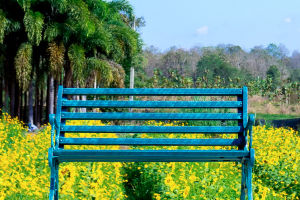The Golden Gate Bridge, an internationally renowned structure, stands as an architectural masterpiece and symbol of San Francisco. This fiery red bridge spans the entrance of the San Francisco Bay, reaching a height of 746 feet (227 meters).
Designed by architect Alvin Morrow, the bridge's distinctive color, known as international orange, was chosen to blend with the surrounding landscape and improve visibility in the frequent fog of the Golden Gate Channel.
Its innovative design and breathtaking appearance have earned it praise from the international bridge engineering community.
The American Institute of Architects and Engineers has recognized it as one of the modern wonders of the world, solidifying its status as one of the most photogenic bridges worldwide.
The idea of constructing a bridge across San Francisco Bay dates back to August 1869 when Joshua Norton proposed the concept, suggesting Oakland as the location.
In 1872, Charles Crocker, a builder for the Central Pacific Railroad, presented a proposal for a suspension bridge spanning the Golden Gate Channel to Marin County authorities. However, the plan was deemed too expensive, and the idea remained dormant for over 40 years.
In 1916, journalist James Wilkins reignited interest in the bridge through an article in the San Francisco News Bulletin, highlighting its potential for economic growth. The city engineer, Michael O'Shaughnessy, estimated the project cost at a staggering $100 million at the time.
Seeking a more feasible approach, O'Shaughnessy reached out to bridge engineers and eventually connected with Josef Strauss, an experienced structural engineer.
Strauss proposed a hybrid cantilever suspension bridge design, incorporating massive cantilevers on both sides connected to a central suspension section. Strauss committed $17 million to make the project a reality.
Strauss spent a decade in Northern California, garnering support and refining his proposal. His audacious idea, which surpassed previous bridge spans, gained approval.
The Golden Gate Bridge, named after the Golden Gate Strait and Highway District Act of 1923, astonished the bridge industry with its innovative approach. Spanning 1280 meters using the cantilever principle and eliminating the need for piers, it captivated the world.
Since its completion in 1937, the Golden Gate Bridge has become San Francisco's most iconic landmark. It has appeared in numerous films, showcasing the city's beauty and sometimes portraying it as a target of destruction.
Over the years, the bridge has served as a captivating backdrop, inspiring countless directors and leaving an indelible mark on American cinema.
With a length of 2,737.4 meters, a width of 27.5 meters, and a towering height of 227.4 meters, the Golden Gate Bridge connects San Francisco to cities further north, serving as a vital transportation link. It took four years and over 100,000 tons of steel to construct, and was designed by bridge engineer Joseph Strauss.
The Golden Gate Bridge's historical significance led to the production of a 2007 documentary co-produced by the United Kingdom and the United States. Its vibrant international orange color ensures clear visibility for ships approaching from a distance, particularly in foggy weather.
Undoubtedly, the bridge is a must-see attraction for anyone visiting San Francisco, captivating visitors with its awe-inspiring presence and iconic status.

